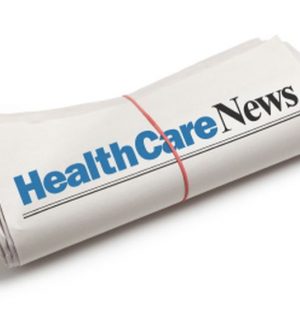- Skip Storing This Everyday Product in the Fridge Door
- Green Tea + B3 Pairing May Boost Brain Health
- Navigating Your Midlife Crisis: Embracing New Possibilities
- City Raccoons Showing Signs of Domestication
- Mapping the Exposome: Science Broadens Focus to Environmental Disease Triggers
- One Week Less on Social Media Linked to Better Mental Health
- Your Brain Changes in Stages as You Age, Study Finds
- Some Suicide Victims Show No Typical Warning Signs, Study Finds
- ByHeart Formula Faces Lawsuits After Babies Sickened With Botulism
- Switch to Vegan Diet Could Cut Your Greenhouse Gas Emissions in Half
Health Highlights: Jan. 7, 2021

Below are newsworthy items compiled by the HealthDay staff:
Identical Twins Aren’t Perfect Clones
Identical twins are not exact genetic matches of each other, the Associated Press reported Thursday.
Icelandic researchers sequenced DNA from nearly 400 pairs of identical twins as well as from their parents, children and spouses.
They found “early mutations that separate identical twins,” Kari Stefansson, a geneticist at the University of Iceland and the company deCODE genetics, told the AP. The report was published Thursday in the journal Nature Genetics.
Differences between identical twins were thought to be caused by environment, not genetics. However, on average, the identical twins in the study had five of these early genetic differences. About 15% of the identical twins had even more genetic differences, some of them up to 100, Stefansson said.
Although these differences are a tiny portion of each twin’s genetic code, they might influence why one twin is taller or why one twin is at greater risk for certain cancers.
Previously, many researchers believed that physical differences between identical twins were related mostly to environmental factors, such as nutrition or lifestyle.
Jan Dumanski, a geneticist at Uppsala University in Sweden, told the AP, “The implication is that we have to be very careful when we are using twins as a model” for teasing apart the influences of nature and nurture.
Stefansson said that they found pairs of twins where a mutation is in all cells of the body of one twin, but not in the other twin.
However, “sometimes the second twin may show the mutation in some cells, but not all cells,” he said.
Nancy Segal, a psychologist who studies twins at California State University, Fullerton and was not involved in the paper, told the AP that the research was “heroic and really significant.”
“This will force scientists to refine our thinking about the influences of genetics and environment,” she said. “Twins are very alike, but it is not a perfect similarity.”
NFL Urges Teams to Offer Stadiums as Vaccination Centers
The NFL is asking teams to use their stadiums as places people can go to get vaccinated for COVID-19, CBS News reported Wednesday.
“We have encouraged clubs to contact their state and local health departments to offer stadiums and practice facilities, if practical, to serve as sites for vaccinating the general public,” NFL spokesman Brian McCarthy said in a statement Tuesday. “These will be decisions between the clubs and their local officials based on need, location and availability.”
Using arenas for vaccinations isn’t a new idea. The University of Michigan’s Big House, the nation’s largest college football stadium, became a vaccine center and can vaccinate up to 2,000 people a day. Former hockey stadium Broadbent Arena in Kentucky is another vaccination location.
In Massachusetts, Fenway Park, home of the Boston Red Sox, is expected to be a vaccination site. The state’s firefighters’ union chief told CBS that Gillette Stadium, home of the New England Patriots, could also become a vaccination site.
In Miami, Hard Rock Stadium, where the Dolphins play, is also expected to be a vaccine center, the Tampa Bay Times reported.
The NFL would benefit from Americans being vaccinated because that increases the odds that state officials will reopen stadiums. Closed stadiums mean teams aren’t making money from ticket sales, concession stands, merchandise and other revenue sources, like in-stadium advertising.
Copyright © 2025 HealthDay. All rights reserved.










